Summary of the 1st Flood Risk Management (FRM) Webinar - Extreme Flood Events in Latam, Europe and Asia
The IAHR Technical Committee on Flood Risk Management organized its inaugural webinar on Extreme Flood Events in Latam, Europe, and Asia, held on March 20, 2025. The event brought together global experts to discuss recent extreme flood events, integrated flood risk management strategies, and nature-based solutions (NBS), with a focus on heavy rainfall impacts in Latin America, Europe and Asia. The webinar was chaired by Daniela Molinari (Politecnico di Milano), Stefan Haun (Graz University of Technology), Kamal El Kadi Abderrezzak (Compagnie Nationale du Rhône), and Cesar Alvarado Ancieta (University of Technology and Engineering, Lima).
Presentations
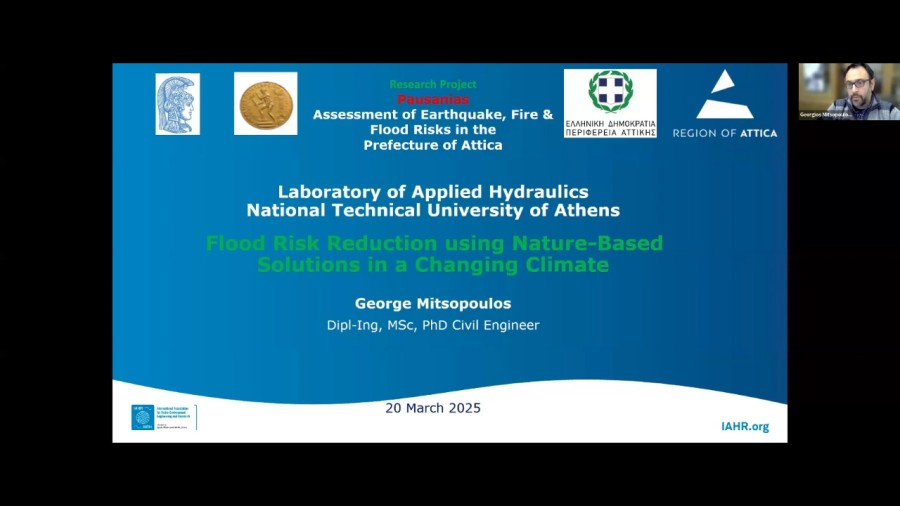
1. Flood Risk Reduction Using Nature-Based Solutions in Greece
Georgios Mitsopoulos (National Technical University of Athens) presented a case study from Marathon, Greece, where NBS (afforestation, retention basins) were modeled to mitigate flash floods in a historically vulnerable area. Key takeaways:
A 1D-2D hydrodynamic model showed 20-30% peak flow reduction and 15% flood risk reduction in urban areas.
Challenges included data scarcity and land-use constraints, but simplified models proved effective for NBS impact assessment.
Afforestation (53% of catchment) and small retention basins (200,000 m³ storage) significantly reduced inundation.
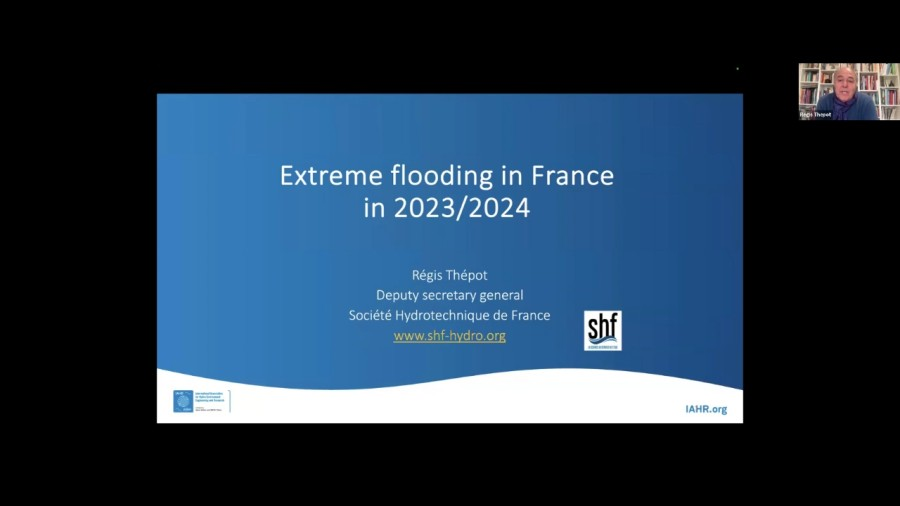
2. Extreme Flood Events in France (2023–2024)
Régis Thépot (Société Hydrotechnique de France) analyzed unprecedented flooding in northern France caused by 32 consecutive days of rainfall (500 mm total), contrasting with a 32-day drought earlier in 2023. Highlights:
370 municipalities declared disaster zones due to pluvial flooding, exacerbated by outdated drainage systems in low-lying deltaic regions.
Governance gaps: France's 35,000 municipalities struggle with fragmented flood management; EU directives (e.g., 100–year return periods) may underestimate climate-change-driven extremes.
Call to separate protection of people vs. property and prioritize adaptive land-use planning.
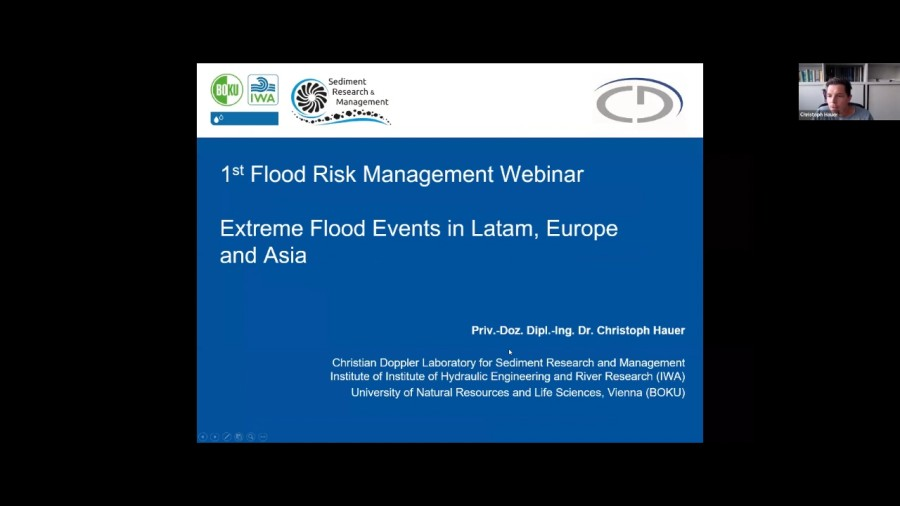
3. Critical Flows in Flood Hazard Analysis: Austrian Cases
Christoph Hauer (BOKU Vienna) introduced the Grünert theory, demonstrating how supercritical flows (Froude number >1) during extreme events trigger uncontrolled erosion. Case studies included:
Kamp River (2002): Bridge constrictions caused 17 scour sites; post-flood morphology shifted to subcritical flows.
Flam River, Norway (2013): LiDAR data confirmed erosion corridors aligned with supercritical flow zones.
Recommendation: Integrate Froude number mapping into flood hazard models to identify high-risk zones.
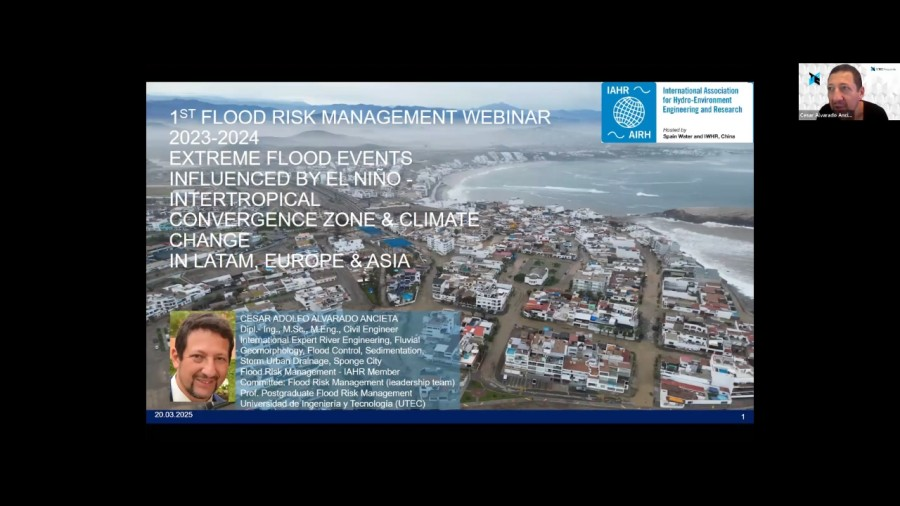
4. El Niño and Climate Change Impacts in Latam, Europe, and Asia
Cesar Alvarado Ancieta highlighted 2023–2024 floods linked to El Niño, urbanization, and poor infiltration:
Record rainfall: São Paulo (682 mm/24h), Dubai (225 mm/24h), and Ayutthaya, Thailand (2011 floods costing $61 billion).
Urbanization reduced infiltration by 50–70%, worsening pluvial flooding (e.g., Bangkok’s impervious surfaces grew 300% since 1983).
Proposed integrated flood management: Combine riverine protection (100–400-year return periods), multipurpose reservoirs, flood defences, natural river meandering and green infrastructure. Storm urban flooding protection (to be updated from 5 to 25-50-year return periods), urbanization control for natural infiltration, combined sponge city and SUDs. Combined riverine and urban protection.
Key Discussion Points
Nature-based vs. gray infrastructure: NBS offer long-term benefits but require tailored modeling and stakeholder buy-in.
Governance: Centralized flood-risk plans must address extreme events beyond 100-year benchmarks for river protection and 5-year benchmarks for urban drainage. Current benchmarks are not more sustainable.
Data gaps: Field validation and high-resolution modeling (e.g., LiDAR) combined with conventional terrain control and overlapping with conventional topography are a must, are critical for erosion and supercritical flow analysis.
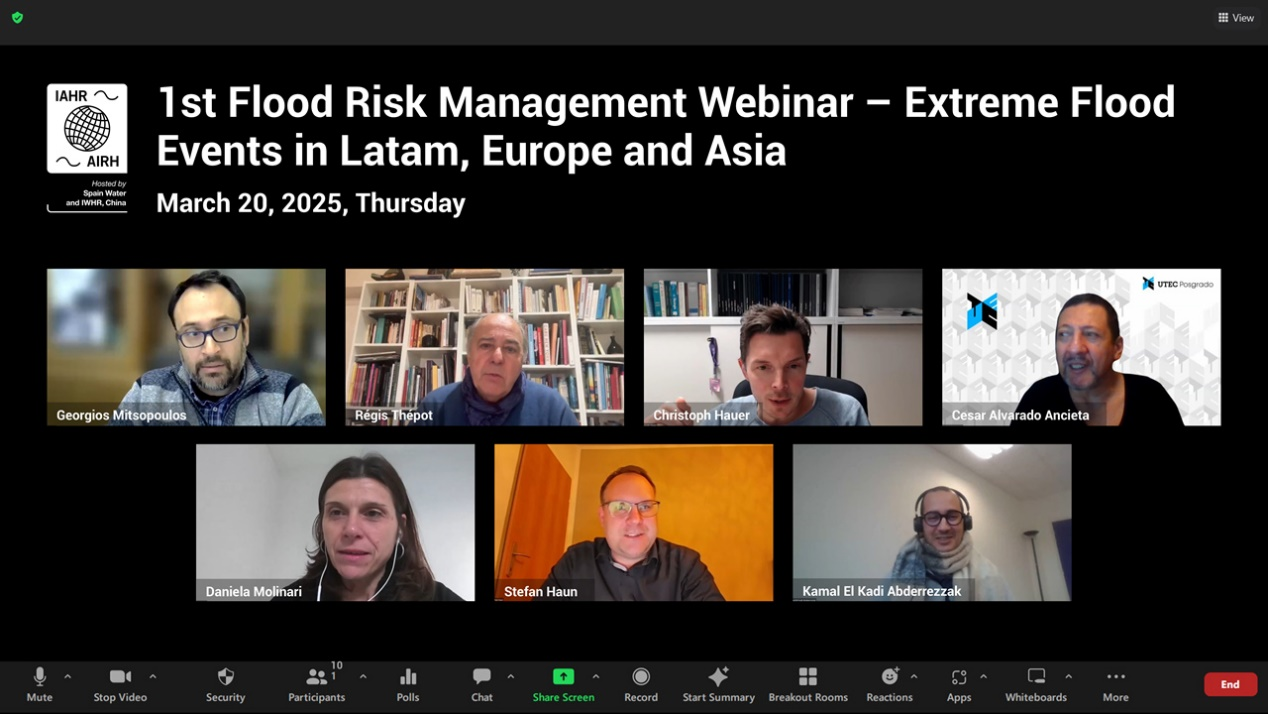
Closing Remarks
Daniela Molinari emphasized the need for global collaboration to advance flood resilience, noting the committee's role in bridging research and practice. The webinar underscored that while technology (e.g., modeling, NBS) is vital, human-centric policies and adaptive governance are equally crucial.
» IAHR Technical Committee on Flood Risk Management
» Playback videos of this webinar